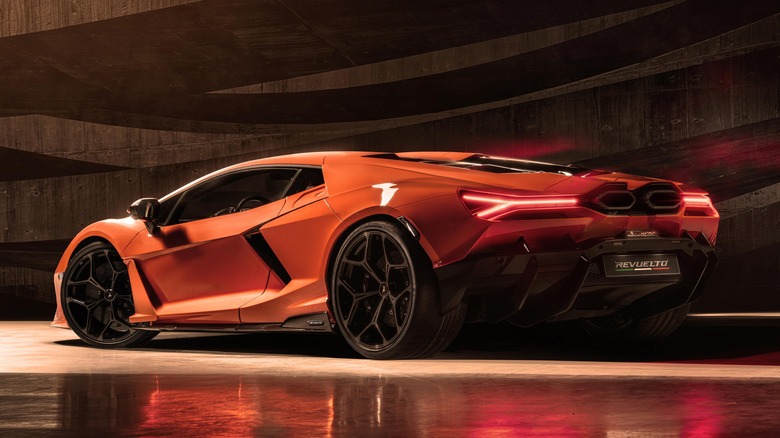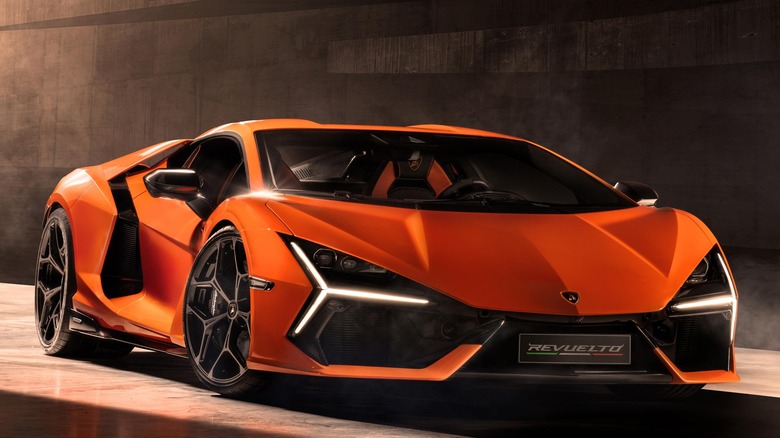The Lamborghini Revuelto Is Already Proving Skeptics Wrong
The Lamborghini Revuelto is the brand's first plug-in hybrid, and as one may expect from Lamborghini, the car is absolutely wild. It has 1,000 horsepower and is powered by a V12 (because of course) and three electric motors. It will go from a dead stop to 60 miles per hour in just 2.5 seconds, and it can reach a top speed of 217 miles per hour for good measure. It also looks like a flying pointy wedge from space.
Does the fact that it's a hybrid detract from the Lamborghini-ness of the car? After all, the brand's entire history before the Revuelto has been dedicated to fire-breathing gasoline V12s, without the slightest hint of hybridizing (aside from the one-off Sian, which used supercapacitors instead of a battery). Apparently, actual buyers of the Revuelto aren't concerned about the battery and electric motors sullying their supercar. According to a press release by Lamborghini, the plug-in has received enough orders for two full years of production.
Hybridization makes it better
That means a few things. On a practicality note, you are likely already too late to get a new Revuelto if you even had the funds to buy one. Secondly, the hybrid-ness has no impact at all on the Lamborghini-ness of the brand's newest speed monstrosity.
From a purist's standpoint, the clinical feel of electric motors could be seen as a detractor to Lamborghini's inherently bonkers design conventions. However, from a performance standpoint, the numbers don't lie and the instant torque from the partially EV-drivetrain provides objectively better acceleration numbers than most other gasoline-powered cars.
As a side note, sales numbers released by Lamborghini indicate that not only are the Urus SUV and V10-powered Huracan the brand's best sellers (and subsequently sold out until 2024), but the United States is the largest individual market of Lambos by a significant margin. 1,625 Lamborghinis will be arriving in American driveways/garages/private airport hangers this year. Italy, the home country of the brand, only bought 270 cars.

